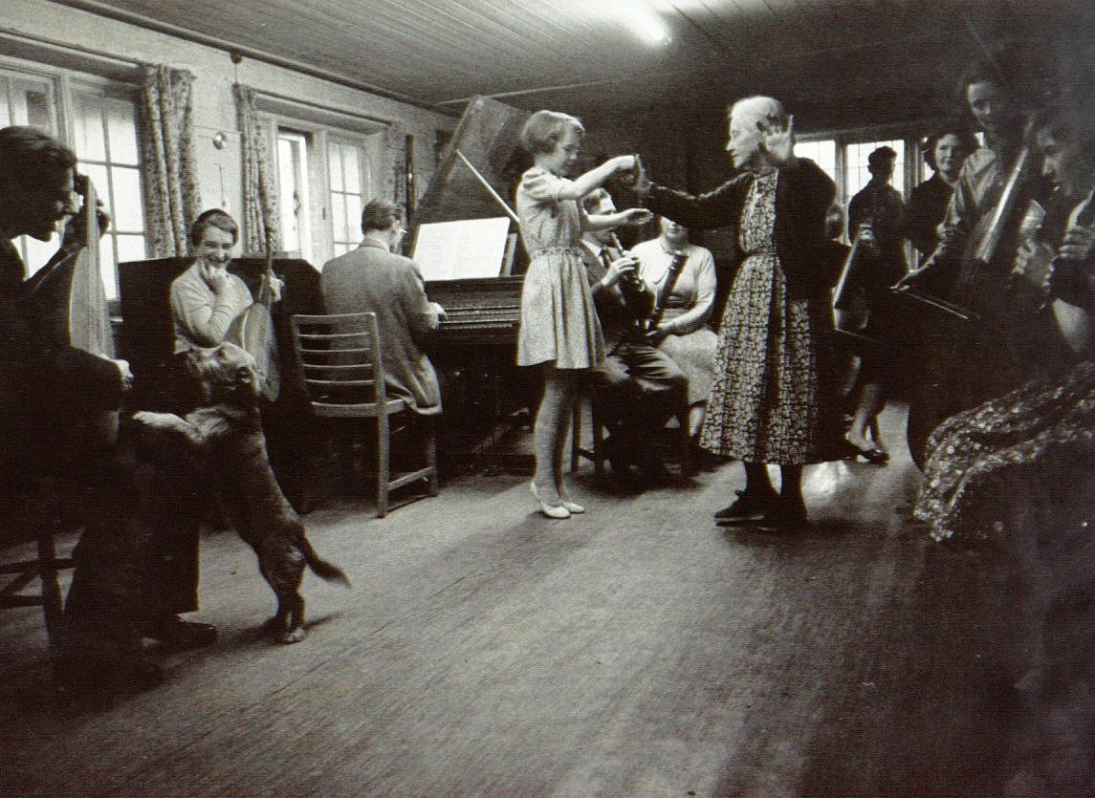Ann Hinchliffe with Anne Daye
Have you ever wondered where our wonderful folk dances come from? Why Cotswold morris echoes the structure of Black Nag and Picking up Sticks? How Jane Austen’s characters could talk so much while they were dancing?
These are topics that the Historical Dance Society researches, publishes and teaches, in UK and other countries. They’ve been doing that since 1971, and next year will celebrate their fiftieth anniversary.
It began with Arnold Dolmetsch (1858-1940), who crystallised current interest in early music just as Cecil Sharp did with English folk dance, music and song. You may remember Dolmetsch recorders from your own school-days. Dolmetsch was trained as a craftsman at his parents’ piano manufactory in France, then studied at the Conservatoire royal de Bruxelles where he encountered musicians playing early musical instruments. In 1883, he moved with his family to London, to enrol at the newly opened Royal College of Music. He began to collect and later make viols, lutes and a range of early keyboard instruments, for concerts where his family and colleagues performed on treasured originals and on Dolmetsch’s reconstructed instruments.
From the early 1900s, Arnold’s wife Mabel, then her daughter Nathalie and grand-daughters Louise and Marie-Therese, developed the study and reconstruction of historical dance manuscripts. All of them published books and pamphlets, performed in concerts, and taught classes and summer schools. A brief glimpse of Mabel dancing to the playing of Arnold and a very young Nathalie here.
During the 1969 Summer School, at York University, Nathalie and Louise proposed forming a Historical Dance Society, and gathered supporters. The Dolmetsch Historical Dance Society – now just The Historical Dance Society – was launched in 1971, with Dame Marie Rambert as its first President. From the outset, the focus was on researching and teaching, though there was a costumed performance group in the 1970s. Other institutions, such as the Imperial Society of Teachers of Dancing, and later the Early Dance Circle, developed links with the world of the stage.
The summer schools and day classes have continued under the next chair, Anne Daye (now Director of Research and Education) and so has the publishing of the research – all freely downloadable from https://historicaldance.org.uk/conferences. There are groups of historical dance enthusiasts all over UK and elsewhere. There have been a series of conferences on aspects of historical dance, most recently in collaboration with The English Folk Dance and Song Society (EFDSS), the Morris Ring, the Morris Federation, Open Morris, InStep, and The University of Roehampton. We learn, discuss and debate music, costume, education, historical sources etc, but most importantly we dance.

Photograph from mid-1950s: Mabel Dolmetsch dancing with grand-daughter Marie-Therese. Other Dolmetsch family and friends are playing music. (courtesy Dolmetsch Foundation)
Even before the blast of the pandemic, HDS had begun recording and sharing videos of historical dance, and linking to many other groups doing the same. Throughout 2020 we’ve run regular lectures on a wide variety of topics, and all are free to watch via our website. In November 2020 we held a two-day on-line festival, Playford – Then and Now, with fascinating contributions from the worlds of folk, ceilidh, stage, TV ,and research.
Next year, our 50-year anniversary, is – as for all of us – rather uncertain. We don’t know whether our planned Elizabethan Revel will be able to go ahead in April or our annual Summer School which was cancelled in 2020. We do have the certainty, though, of continuing to research and publish. New material is constantly being discovered, for example several 17th-century manuscripts describing what we know as Playford dances in varied forms. There’s always more to find out about historical dancing.
Without music, life would be a mistake - Friedrich Nietzsche
quoted on the Dolmetsch Foundation website
